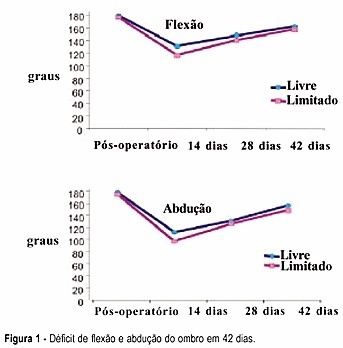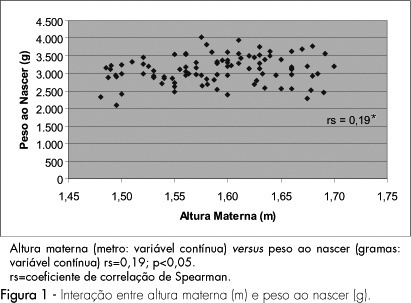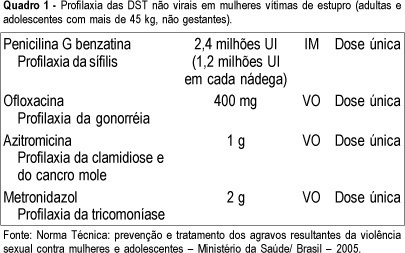Summary
Revista Brasileira de Ginecologia e Obstetrícia. 2001;23(2):125-126
DOI 10.1590/S0100-72032001000200016
Summary
Revista Brasileira de Ginecologia e Obstetrícia. 2001;23(2):125-125
DOI 10.1590/S0100-72032001000200015
Summary
Revista Brasileira de Ginecologia e Obstetrícia. 2005;27(3):125-129
DOI 10.1590/S0100-72032005000300005
BACKGROUND: patients with primary amenorrhea and gonadal dysgenesia have higher serum gonadotrophins and should be submitted to chromosome studies. Karyotype studies may be performed in gonadal tissue or peripheral blood however, it is not yet established if cases of primary amenorrhea without signs of virilization need additional investigation of gonadal karyotype. PURPOSE: to analize the gonadal karyotypes (ovaries) from patients with primary amenorrhea and compare them to their respective peripheral blood karyotypes. METHODS: clinical and karyotype data of 12 patients were retrospectively analyzed from January 1997 to December 2003. RESULTS: when the investigation was indicated for primary amenorrhea without signs of virilization, the gonadal and peripheral blood karyotypes were concordant in 8 cases (7 cases 46XX and 1 case 46XY). One patient with virilization signs was the only case of discordant karyotype. CONCLUSION: the present study suggests that the gonadal karyotype does not bring additional information to peripheral blood karyotype in patients with amenorrhea and no signs of virilization. Although all previous studies had a small number of patients, it seems advisable to investigate the gonadal karyotype in patients with signs of virilization. The cost-benefit analysis could allow cost and stress reduction for patients, family and institutions.
Summary
Revista Brasileira de Ginecologia e Obstetrícia. 1998;20(3):125-125
Summary
Revista Brasileira de Ginecologia e Obstetrícia. 2004;26(2):125-130
DOI 10.1590/S0100-72032004000200007
PURPOSE: to evaluate the efficacy of a physical exercise protocol in the recovery of shoulder movement in women who underwent complete axillary lymph node dissection due to breast carcinoma, comparing free and restricted amplitude movements. METHODS: 59 women who underwent complete axillary lymph node dissection associated with modified mastectomy (46) or quadrantectomy (13) were included in this clinical, prospective and randomized study. On the first day after surgery 30 women were randomized to do the shoulder movement with free amplitude and 29 women had this amplitude restricted to 90º in the first 15 days. Nineteen exercises were done, three sessions per week, for six weeks. Mean (± standard error) deficits of shoulder flexion and abduction were compared, as well as gross and adjusted incidence rates of seroma and dehiscence. RESULTS: 42 days after surgery, flexion and abduction means were similar in the two groups. Both presented a mean flexion deficit (17.2º and 21.6º, respectively), and abduction deficit (19.7º and 26.6º, respectively). The incidence rates of seroma and dehiscence were neither related to exercise nor to the type of surgery, time of drain permanence, number of dissected or compromised lymph nodes, age or obesity. CONCLUSION: early physiotherapy with free movement of the women's shoulder was associated neither with functional capacity nor with postsurgical complications.

Summary
Revista Brasileira de Ginecologia e Obstetrícia. 2022;44(2):125-132
To investigate the expression of endothelin-1 (ET-1) and endothelial nitric oxide (NO) synthase (eNOS) in normal and preeclamptic (PE) placentae.
The present cross-sectional analytical study was performed in normal and PE primigravidae (n=10 in each group) who were admitted to the North Okkalapa General and Teaching Hospital from February 2019 to February 2020. Serum samples were collected immediately before delivery, and placental tissues were collected immediately after emergency or elective cesarean section. The expression of placental eNOS was measured by western blot, and the levels of ET-1 in placental tissue homogenates and in the serum were measured by enzyme-linked immunosorbent assay (ELISA).
The PEgrouphadsignificantly higher serumlevelsof ET-1(median: 116.56 pg/mL; IQR: 89.14-159.62 pg/mL) than the normal group (median: 60.02 pg/mL; IQR: 50.89-94.37 pg/mL) (p<0.05). However, statistically significant differences were not observed in the levels of ET-1 in placental tissue homogenates between normal and PE placentae (median: 0.007 pg/μg of total protein; IQR: 0.002-0.0123 pg/μg of total protein; andmedian: 0.005 pg/μg of total protein; IQR: 0.003-0.016 pg/μg of total protein respectively). The median and IQR values of relative placental eNOS expression were significantly higher in the PE group than in the normal group (p<0.05). The serum levels of ET-1 level were not significantly correlated with placental ET-1 expression, and neither there was a significant correlation between placental ET-1 and eNOS expression in any of the groups.
The serum levels of ET-1 were significantly higher in PE pregnant women compared with normal pregnant women, while the ET-1 levels of placental tissue homogenates were not significantly different. Serum ET-1 rather than placental ET-1 might play a major role in the pathogenesis of PE.

Summary
Revista Brasileira de Ginecologia e Obstetrícia. 2007;29(3):126-133
DOI 10.1590/S0100-72032007000300003
PURPOSE: to evaluate the impact of the nutritional status of pregnant adolescents on the birth weight. METHODS: a cohort study including 97 adolescents and their respective newborns, evaluated from May to June, 2004. Pregnant women from 10 to 19 years old in labor were included in the study, and those with multiple pregnancies, complications, less than 37 weeks gestation, and incomplete data records were excluded. Maternal nutritional status evaluation included height, body mass index (BMI) before pregnancy, gestational weight gain (GWG) and caloric-proteic intake, obtained by habitual food intake recordatory by the end of the third gestational trimester. The association between maternal variables (height, pre-gestational BMI, GWG and intake) and the newborn weight was analyzed by Spearman's correlation test. Statistical significance was assumed when p<0.05. RESULTS: the mean age was 17.8±1.12 years old. Most adolescents (66%) started pregnancy with adequate weight, 29% had low weight and 5% overweight. Most adolescents showed inadequate GWG, caloric and proteic intake. Low birth weight was recorded in 7% of the newborns and insufficient weight was recorded in 37% of them. Maternal height and GWG showed positive and significant BW relation. Pre-gestational BMI and protein intake showed statistically significant inverse correlation with birth weight. No correlation between caloric intake and BW was demonstrated. CONCLUSION: maternal height and GWG influence the newborn nutritional status.

Summary
Revista Brasileira de Ginecologia e Obstetrícia. 2006;28(2):126-135
DOI 10.1590/S0100-72032006000200009
Gender-based violence is related to the power imbalance between men and women that is present, to a greater or lesser degree, in all societies. It was recognized as a human rights problem by the UN relatively recently. It includes emotional, physical and sexual violence. Sexual violence is the extreme form of gender violence, usually accompanied by the other types of violence. Its prevalence is difficult to determine, but it most probably affects at least one third of women some time in their life. It has multiple consequences to women's physical and gynecological health, which depends in great part on the quality of the care the woman received immediately after the assault. Unfortunately, most emergency health services, including those in women's hospitals, are rarely prepared to provide the correct care for these women. Care should be multidisciplinary and involves crisis treatment, meticulous clinical examination with complementary auxiliary methods, treatment of physical lesions, prevention of pregnancy and of sexually transmitted infections and AIDS, and follow-up for at least six months after the aggression.
